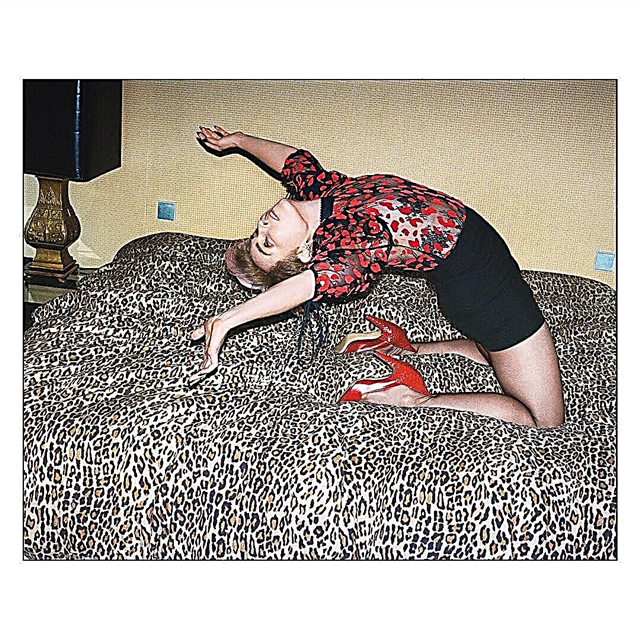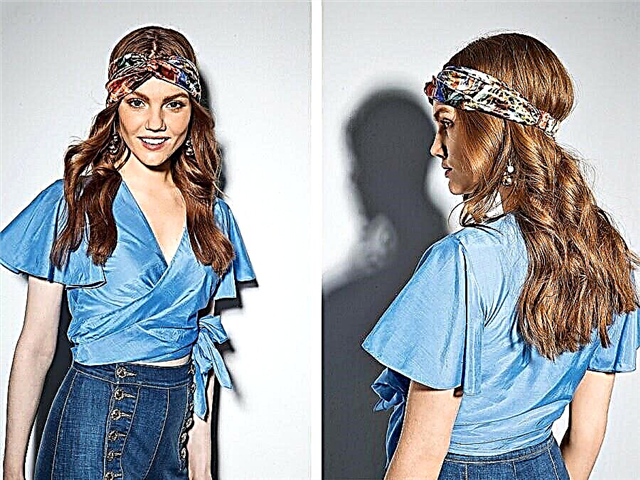Burda magazine pattern archive is a storehouse of diverse models. Here you will surely find a pattern of a basic dress for every day and something trendy.

But it happens that to create the perfect outfit, quite a bit is lacking, the very highlight that can be, for example, unusual sleeves.
Today we will consider two types of sleeves that can be obtained by modeling based on the Burda pattern.

In this and subsequent workshops on sleeve modeling, we selected model 124 from the Burda 11/2013 release as the basis:
- Best-seller
- Special offer

- 1
- 2
- 3
- 4
You can also use other Burda patterns with the usual set-in sleeve of a small volume:
- Special offer

- 1
- 2
- 3
- 4
- Best-seller
- Special offer

- 1
- 2
- 3
- 4
- Special offer

- 1
- 2
- 3
- 4
- Best-seller
- Special offer

- 1
- 2
- 3
- 4
Before proceeding with modeling, make sure that the sleeve has a small fit on the okat. Landing should be about 1.5 cm.
How to change the sleeves
You will need:

- paper for drawing (whatman paper, graph paper, tracing paper);
- a pencil;
- ruler;
- measuring tape;
- paper scissors;
- glue or adhesive tape;
- fabric for the manufacture of the layout;
- tailor pins, scissors for fabric, thread, needle.
Sharp shoulder modeling

Prepare the pattern of the sleeve, if necessary, increase or decrease the fit of the okat of the sleeve. Transfer the pattern to a piece of paper and cut it out. Move all the tags.
Mark the highest point of the oketa with the letter A.

From the highest point of the okata, A, lower the perpendicular 3.2 cm long. Mark point B.

Set aside 10 cm in different directions from the point, A along the line of okat, using a measuring tape or a flexible ruler. Mark points B and D.

From points B and D, lower the perpendiculars with a length of 3.2 cm. Mark points D and E, respectively.

Connect the points D, B and E with a curved line parallel to the line of okat.

Cut the pattern along the lines AB, BD, BE, as well as along the lines ДВ and ЕГ, not reaching 1−2 mm to the line of okat of the sleeve.
In addition, cut the resulting segments ABDV and ABEG in the center, also not reaching the line of okat 1-2 mm, as shown in the photo.

Place a new piece of paper under the piece and expand the ABDV and ABEG segments upwards, converting the curved lines of AB and AG into straight lines, as shown in the photo.

From points A, draw perpendiculars to the center of the sleeve about 3.2 cm long, mark points G and Z.From them, draw lines parallel to the segments AB and AG.
Where the segments from points G and Z abut against the model line, mark points D1 and E1.
Measure the obtained segments ZhD1 and ZE1, they should be equal to 10-11 cm.

Circle the resulting piece of the pattern and cut.
Modeling is not finished yet.
Divide the sleeve pattern with a vertical line from point B to the elbow line if the sleeve is long, or to the bottom if the sleeve is short and cut.

Place a sheet of paper under the piece again and transfer point B.
Spread the sleeve halves 3.8 cm in both directions, as shown in the photo.

Also, put 3.8 cm up from point B - mark point I. In fact, with this action we return part of the height of the sleeve ridge, which was taken away in the first modeling step.
Through point And draw a curved line to points D1 and E1.
Please note: segments ZhD1 = ZE1 = ID1 = IE1 should be equal to each other.


Circle the resulting pattern and cut it.
Types of sleeves: understand the terminology
Assembly of the layout of the sleeve

Before you cut the sleeve from the main fabric, it is better to make sure that it will turn out exactly as it was conceived, and make a layout.
Transfer the sleeve pattern to the breadboard fabric with 1 cm allowances and cut.

Stitch short sections at the highest point of the sleeve (AB lines in the drawing). Flatten the allowances.
When assembling the sleeves from the main fabric, these allowances can be pre-swept.

Align the seam with the mark on the center of the sleeve head (point B in the drawing) and pin or pin.

Lay the line.
When assembling the sleeve from the main fabric, both allowances after sewing can be overcast.

Turn out a sleeve, iron allowances up.

It remains to grind the front and back of the sleeve and iron the allowances.

The sleeve is ready to be sewn in. To check the fit, the model can be poked or swept into the bodice of the product.

Such a sleeve model will look harmoniously in a jacket or sheath dress in a strict business style. To create them, it is better to use medium-density fabrics that hold shape. If you plan to sew a thing on a lining, then the upper part of the sleeve can be additionally duplicated, and the sleeve lining can be cut out on the base pattern of the sleeve.
How to fit a sleeve
Modeling sleeves with undercut assemblies
We will slightly modify the previously obtained pattern to get an extravagant version with folds.

Take the previously obtained template blank.

Place a piece of paper under the piece and transfer point B.

Separate the sleeve halves by 7.5 cm (or more) in both directions, as shown in the photo.

Also from point B, step back 4-7.5 cm - mark point I.
The longer the length of the BI segment, the more the assembled part of the sleeve will rise above the shoulder.
I stepped back 6.4 cm.

Through point And draw a curved line to points D1 and E1, as shown in the photo.

Circle the resulting pattern and cut it.
Modeling a lowered bodice based on a Burda pattern
Assembly of the layout of the sleeve

Transfer the sleeve pattern to the breadboard fabric with 1 cm allowances and cut.

Assemble part of the sleeve along the model line (in the drawing D1I and IE1) to a length of 10 cm on each side.

Stitch short sections at the highest point of the sleeve (AB lines in the drawing). Flatten the allowances.
When assembling the sleeves from the main fabric, these allowances can be pre-swept.

Align the seam with the mark on the center of the sleeve head (point B in the drawing) and pin or pin.

Lay the line.
When assembling the sleeve from the main fabric, both allowances after sewing can be overcast.
Unscrew sleeve.
It remains to grind the front and back of the sleeve and iron the allowances.

The sleeve is ready to be sewn in. To check the fit, the model can be inserted into the bodice of the product.

Such a sleeve model will look harmoniously in a jacket or dress in a romantic and retro style.
The author of the master class and photo: Daria Tabatchikova

By education, Daria is a PR specialist and economist, but several years ago she devoted herself entirely to her favorite business - sewing.
She learned to sew from magazines, books and using the Internet, there are also sewing courses in the arsenal, but Daria considers herself to be self-taught. She loves to study specialized sewing literature from different years and countries, and then put her knowledge into practice.
At the end of 2017, Daria became the winner of the festive contest from BurdaStyle.ru.
She leads her Instagram page and VKontakte group.
Material prepared by Julia Dekanova



